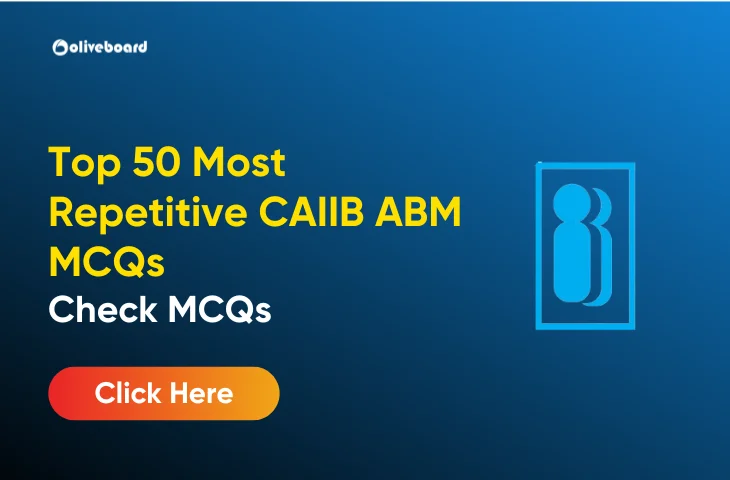Top 50 Most Repetitive CAIIB ABM MCQs
Top 50 Most Repetitive CAIIB ABM MCQs: The CAIIB Advanced Bank Management (ABM) exam is a key step for banking professionals looking to advance their careers. This exam evaluates knowledge in important areas such as financial management, risk management, and banking operations. To help you prepare effectively, we have gathered the 50 most frequently asked MCQs that often appear in the CAIIB ABM exam. These questions will provide valuable insights into important topics and allow you to practice efficiently.
Why CAIIB ABM is Important for Your Career
For banking professionals, passing the CAIIB ABM exam is vital for career progression. The exam focuses on advanced banking concepts, such as financial management, risk management, and compliance with regulations. By reviewing these CAIIB ABM Important MCQs, you can strengthen your understanding and increase your chances of success in the exam.
Key Topics in CAIIB Advanced Bank Management
Before we dive into the MCQs, let’s explore the main areas that are often covered in the CAIIB ABM exam:
- Financial Management: Includes understanding financial statements, liquidity management, and capital planning.
- Risk Management: Covers types of risks like credit risk, market risk, and operational risk.
- Banking Operations: Focuses on the day-to-day running of banks, such as asset-liability management (ALM) and customer relations.
- Regulations and Compliance: Deals with laws and regulations that govern the banking industry, such as Basel guidelines and RBI rules.
Most Repetitive 50 MCQs for CAIIB ABM
Here is top 50 important MCQs that have appeared in previous CAIIB ABM exams:
1. Which of the following is not a part of the bank’s core activities?
- a) Lending
- b) Investment Banking
- c) Savings
- d) Payments
Answer: b) Investment Banking
2. What does the term “Capital Adequacy Ratio” refer to in banking?
- a) The ratio of a bank’s capital to its total assets
- b) The ratio of a bank’s capital to its risk-weighted assets
- c) The ratio of a bank’s loans to deposits
- d) The ratio of a bank’s total liabilities to total assets
Answer: b) The ratio of a bank’s capital to its risk-weighted assets
3. The main purpose of the Asset Liability Management (ALM) is to:
- a) Minimize risk
- b) Ensure liquidity and profitability
- c) Minimize operational costs
- d) Ensure compliance with regulations
Answer: b) Ensure liquidity and profitability
4. Which of the following is the major regulatory body for commercial banks in India?
- a) RBI
- b) SEBI
- c) IRDA
- d) NABARD
Answer: a) RBI
5. What is the maximum percentage of a bank’s loan portfolio that can be lent to the priority sector as per RBI guidelines?
- a) 30%
- b) 40%
- c) 50%
- d) 60%
Answer: b) 40%
6. The term “SWIFT” stands for:
- a) Society for Worldwide International Financial Telecommunications
- b) Society for Worldwide Interbank Financial Transfer
- c) Society for Worldwide Internet Financial Transactions
- d) Society for Worldwide Interbank Financial Telecommunications
Answer: d) Society for Worldwide Interbank Financial Telecommunications
7. What is the primary objective of Central Bank’s monetary policy?
- a) Managing government expenditures
- b) Controlling inflation and managing economic growth
- c) Regulating financial markets
- d) Managing taxation policies
Answer: b) Controlling inflation and managing economic growth
8. In which year was the Banking Regulation Act passed?
- a) 1945
- b) 1949
- c) 1955
- d) 1961
Answer: b) 1949
9. Which of the following is not a component of a bank’s financial statement?
- a) Balance Sheet
- b) Profit and Loss Account
- c) Cash Flow Statement
- d) Borrowing Report
Answer: d) Borrowing Report
10. A “Non-Performing Asset” (NPA) is an asset:
- a) That is performing well
- b) With interest payments overdue for more than 90 days
- c) That generates income for the bank
- d) Which is secured against collateral
Answer: b) With interest payments overdue for more than 90 days
11. What is the minimum capital required for setting up a new bank in India?
- a) Rs. 100 crore
- b) Rs. 200 crore
- c) Rs. 500 crore
- d) Rs. 1,000 crore
Answer: b) Rs. 200 crore
12. What is the full form of the term “IFRS” used in financial reporting?
- a) International Finance and Reporting Standards
- b) International Financial Reporting Standards
- c) Internal Finance and Reporting Standards
- d) International Federation of Reporting Standards
Answer: b) International Financial Reporting Standards
13. The process of “Securitization” involves:
- a) Converting assets into marketable securities
- b) Selling non-performing loans to investors
- c) Selling a bank’s physical assets
- d) Issuing new loans to customers
Answer: a) Converting assets into marketable securities
14. The main function of the RBI’s monetary policy is to:
- a) Control the liquidity in the economy
- b) Ensure loan growth in the economy
- c) Regulate interest rates on savings accounts
- d) Control the stock market
Answer: a) Control the liquidity in the economy
15. What does “Liquidity” in banking refer to?
- a) The amount of deposits a bank holds
- b) The ease with which a bank can access cash to meet its obligations
- c) The total capital invested in the bank
- d) The amount of loans granted by a bank
Answer: b) The ease with which a bank can access cash to meet its obligations
16. What is the term used for a customer account that has not been operated for a period of more than one year?
- a) Dormant Account
- b) Inactive Account
- c) Overdue Account
- d) Overdraft Account
Answer: a) Dormant Account
17. What does the term “Money Laundering” refer to?
- a) Providing loans to non-eligible individuals
- b) Moving illicit money into the legal financial system
- c) Disposing of old currency notes
- d) Reducing the money supply in the market
Answer: b) Moving illicit money into the legal financial system
18. What is the base rate in banking terminology?
- a) The rate charged by the central bank
- b) The minimum interest rate set by the RBI
- c) The rate charged by a bank to its customers for loans
- d) The rate of return on government securities
Answer: b) The minimum interest rate set by the RBI
19. The term “MCLR” in banking stands for:
- a) Maximum Credit Lending Rate
- b) Minimum Cost Lending Rate
- c) Marginal Cost of Funds Based Lending Rate
- d) Marginal Credit Lending Rate
Answer: c) Marginal Cost of Funds Based Lending Rate
20. Which of the following is an example of a fixed financial instrument?
- a) Mutual Funds
- b) Bank Deposits
- c) Stocks
- d) Equity Shares
Answer: b) Bank Deposits
21. What does “Risk-Based Capital” mean for banks?
- a) A measure of the risk taken by the bank in lending
- b) The bank’s capital determined by the risk of its assets
- c) The total capital required for market risk management
- d) The bank’s risk exposure to the government sector
Answer: b) The bank’s capital determined by the risk of its assets
22. A “Cash Reserve Ratio” (CRR) is maintained by banks with:
- a) RBI
- b) SEBI
- c) Banks’ own reserves
- d) The central government
Answer: a) RBI
23. What is the main objective of the Bank’s Corporate Social Responsibility (CSR) initiatives?
- a) Maximizing profits
- b) Fulfilling social and environmental obligations
- c) Reducing operational costs
- d) Increasing stock market performance
Answer: b) Fulfilling social and environmental obligations
24. What is the maximum period a bank can accept deposits from customers?
- a) 1 year
- b) 3 years
- c) 5 years
- d) No limit
Answer: d) No limit
25. What is the key difference between a term deposit and a demand deposit?
- a) Term deposits are non-repayable
- b) Term deposits have a fixed tenure, while demand deposits can be withdrawn anytime
- c) Term deposits are offered only by commercial banks
- d) Demand deposits have higher interest rates
Answer: b) Term deposits have a fixed tenure, while demand deposits can be withdrawn anytime
26. What is the minimum CRR that every commercial bank must maintain?
- a) 2%
- b) 3%
- c) 4%
- d) 5%
Answer: a) 2%
27. In terms of “Risk Management,” what is “Hedging”?
- a) Taking a position to limit potential losses
- b) Increasing market exposure
- c) Selling financial instruments
- d) Avoiding market risk
Answer: a) Taking a position to limit potential losses
28. What is the main objective of the bank’s Credit Risk Management framework?
- a) Preventing credit from being provided to high-risk customers
- b) Maximizing profitability from lending
- c) Ensuring compliance with banking regulations
- d) Reducing operational costs
Answer: a) Preventing credit from being provided to high-risk customers
29. Which of the following is an example of a contingent liability for a bank?
- a) Loan repayment
- b) Guarantees given by the bank
- c) Current account deposits
- d) Term deposits
Answer: b) Guarantees given by the bank
30. What does “AML” in banking stand for?
- a) Automated Loan Management
- b) Anti-Money Laundering
- c) Advanced Market Loans
- d) Advanced Money Lending
Answer: b) Anti-Money Laundering
31. What is the main focus of Basel III norms?
- a) Reducing government intervention in banking
- b) Strengthening capital requirements and improving risk management
- c) Increasing liquidity in the market
- d) Expanding credit to the retail sector
Answer: b) Strengthening capital requirements and improving risk management
32. Which of the following is not a type of financial derivative?
- a) Futures contracts
- b) Options
- c) Treasury Bills
- d) Swaps
Answer: c) Treasury Bills
33. The term “Interest Rate Risk” in banking refers to:
- a) The risk of a bank’s liquidity position changing
- b) The risk that changes in interest rates will negatively affect a bank’s financial condition
- c) The risk of loan default
- d) The risk of inflation affecting purchasing power
Answer: b) The risk that changes in interest rates will negatively affect a bank’s financial condition
34. Which of the following is not typically a function of the Risk Management Committee in a bank?
- a) Identifying risks across operations
- b) Developing new financial products
- c) Evaluating and mitigating risks
- d) Ensuring compliance with regulations
Answer: b) Developing new financial products
35. What does the term “Repo Rate” mean?
- a) The rate at which the RBI lends to commercial banks
- b) The rate at which commercial banks lend to each other
- c) The rate at which commercial banks lend to customers
- d) The rate of return on government securities
Answer: a) The rate at which the RBI lends to commercial banks
36. What does the term “LTV Ratio” stand for?
- a) Loan to Value Ratio
- b) Loan to Total Value Ratio
- c) Loan to Transaction Value Ratio
- d) Liability to Value Ratio
Answer: a) Loan to Value Ratio
37. The main objective of the bank’s “Compliance” function is to:
- a) Ensure profitability
- b) Ensure adherence to laws and regulations
- c) Develop new financial products
- d) Increase capital reserves
Answer: b) Ensure adherence to laws and regulations
38. What is “Risk-Based Supervision” (RBS)?
- a) Supervision based on the volume of transactions
- b) Supervision based on risk exposure and capital adequacy
- c) Supervision based on profitability
- d) Supervision based on market share
Answer: b) Supervision based on risk exposure and capital adequacy
39. What does the term “Digital Banking” refer to?
- a) Traditional banking services offered via physical branches
- b) Using digital technology to provide banking services online
- c) Banking operations restricted to mobile banking apps
- d) Offering loans exclusively through digital channels
Answer: b) Using digital technology to provide banking services online
40. What is the role of the Credit Rating Agency in banking?
- a) Evaluate the bank’s financial position
- b) Assess the risk and assign ratings to loans, borrowers, and investments
- c) Set the interest rate for loans
- d) Determine the capital requirements for banks
Answer: b) Assess the risk and assign ratings to loans, borrowers, and investments
41. What is the “Liquidity Coverage Ratio” (LCR)?
- a) A measure of a bank’s liquidity based on risk-weighted assets
- b) A ratio of short-term liquid assets to short-term liabilities
- c) A measure of a bank’s profitability
- d) A ratio of equity capital to assets
Answer: b) A ratio of short-term liquid assets to short-term liabilities
42. The term “KYC” stands for:
- a) Know Your Customer
- b) Know Your Credit
- c) Know Your Client
- d) Know Your Currency
Answer: a) Know Your Customer
43. Which of the following is an example of a long-term financial instrument?
- a) Savings Account
- b) Treasury Bills
- c) Bonds
- d) Demand Draft
Answer: c) Bonds
44. In banking, what does “Cross-Selling” refer to?
- a) Selling products across the counter
- b) Selling complementary or additional products to existing customers
- c) Selling loans to new customers
- d) Selling financial instruments in international markets
Answer: b) Selling complementary or additional products to existing customers
45. What is the purpose of the “Financial Action Task Force” (FATF)?
- a) Setting global interest rates
- b) Combating money laundering and terrorism financing
- c) Regulating financial institutions
- d) Providing credit ratings for countries
Answer: b) Combating money laundering and terrorism financing
46. Which of the following is a non-banking financial institution (NBFC)?
- a) State Bank of India
- b) HDFC Bank
- c) LIC Housing Finance
- d) Reserve Bank of India
Answer: c) LIC Housing Finance
47. What does the term “Basel III” primarily focus on?
- a) Interest rate regulation
- b) Capital and liquidity requirements for banks
- c) Reducing taxation for banks
- d) Regulating loans to the retail sector
Answer: b) Capital and liquidity requirements for banks
48. Which financial statement includes a bank’s assets, liabilities, and equity?
- a) Income Statement
- b) Balance Sheet
- c) Cash Flow Statement
- d) Profit and Loss Statement
Answer: b) Balance Sheet
49. What is the role of the “Audit Committee” in banking?
- a) Approving new financial products
- b) Monitoring financial transactions and ensuring compliance
- c) Setting interest rates for loans
- d) Determining profit margins
Answer: b) Monitoring financial transactions and ensuring compliance
50. The term “Digital Lending” refers to:
- a) Providing loans through physical branches
- b) Providing loans through automated machines
- c) Providing loans via digital platforms or online channels
- d) Providing loans to government employees
Answer: c) Providing loans via digital platforms or online channels
Importance of CAIIB ABM MCQs
Practicing CAIIB ABM MCQs is important for successful preparation.
- Enhances Concept Understanding: MCQs help reinforce the core concepts of Advanced Bank Management, ensuring a clear understanding of the subject.
- Improves Speed & Accuracy: Regular practice helps you manage your time effectively, allowing you to answer questions quickly and accurately during the exam.
- Boosts Retention: Repetition of MCQs helps improve memory, making it easier to recall important topics on the day of the exam.
- Familiarizes with Exam Pattern: MCQs are similar to the actual exam format, helping you get used to the types of questions and boosting your confidence.
- Identifies Weak Areas: By practicing MCQs, you can pinpoint areas where you need more focus, allowing you to study effectively.
- Promotes Conceptual Clarity: It helps you apply theoretical knowledge to real-world banking scenarios, enhancing your understanding of key concepts.
- Comprehensive Review: MCQs cover a broad range of topics, ensuring you revise and understand all the important areas for the exam.
Advantages of CAIIB ABM MCQs
- Better Exam Preparation: CAIIB ABM MCQs help you focus on key topics from the syllabus, ensuring you cover everything needed for the exam.
- Improved Time Management: By practicing MCQs, you can improve your speed in answering questions, which is crucial during the actual exam.
- Better Problem-Solving Skills: Solving MCQs helps you apply what you’ve learned to practical situations, strengthening your problem-solving abilities.
- Increased Confidence: The more you practice MCQs, the more confident you will feel when taking the exam. You’ll be familiar with the exam pattern and types of questions.
- Instant Feedback: MCQs provide immediate feedback, helping you identify weak areas. This lets you focus on those topics before the exam.
- Comprehensive Coverage: MCQs cover a wide range of topics, ensuring that you understand all aspects of the CAIIB ABM syllabus.
- Effective Revision: MCQs are an excellent tool for quick revision, allowing you to go over key concepts and test your knowledge as the exam date approaches.
- Better Understanding of Concepts: The structure of MCQs forces you to think deeply about each topic, improving your understanding.
- More Accuracy: Regular practice helps reduce mistakes and increase accuracy when answering questions during the exam.
- Improved Retention: The repetition of concepts in MCQs helps you retain information for a longer period, which is essential for the exam.
| Related Article | Link |
| CAIIB BRBL Questions | Click here to Check |
| Top 50 Most Repetitive CAIIB BFM MCQs | Click here to Check |
| Top 50 Most Repetitive CAIIB BRBL MCQs | Click here to Check |
| ABM Exam Important MCQs | Click here to Check |
| Top 50 Most Repetitive CAIIB ABFM MCQs | Click here to Check |
Conclusion
The CAIIB ABM Important MCQs listed above are valuable resources to enhance your preparation. Regular practice of these questions will not only boost your knowledge but also help you build confidence for the exam. By focusing on core topics like financial management, risk assessment, and regulatory compliance, you will be well-prepared to tackle the challenges of the CAIIB ABM exam. Best of luck with your preparation.
Top 50 Most Repetitive CAIIB ABM MCQs – FAQs
Ans. CAIIB ABM is an exam for banking professionals to enhance their knowledge in Advanced Bank Management.
Ans. CAIIB ABM MCQs help in reinforcing key concepts, improving speed, and familiarizing candidates with the exam pattern.
Ans. Regular practice of MCQs improves conceptual clarity, retention, and time management for the exam.
Ans. The most repetitive CAIIB ABM MCQs can be found in curated question banks and online resources for exam preparation.
Ans. Focusing on the top 50 most repetitive CAIIB ABM MCQs will give you a better understanding of key topics.
Yes, consistent practice of CAIIB ABM MCQs can enhance your accuracy and overall exam performance.
- Difference Between JAIIB & CAIIB, Eligibility, Exam Pattern
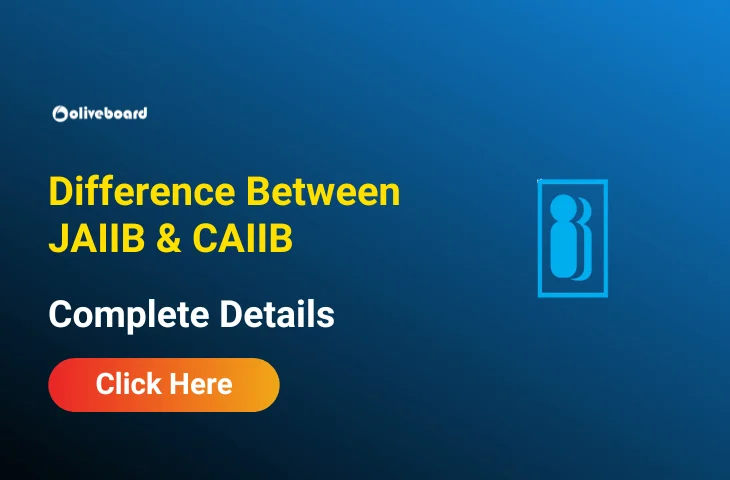
- CAIIB ABFM Module-Wise Preparation Tips & Tricks, Check Details
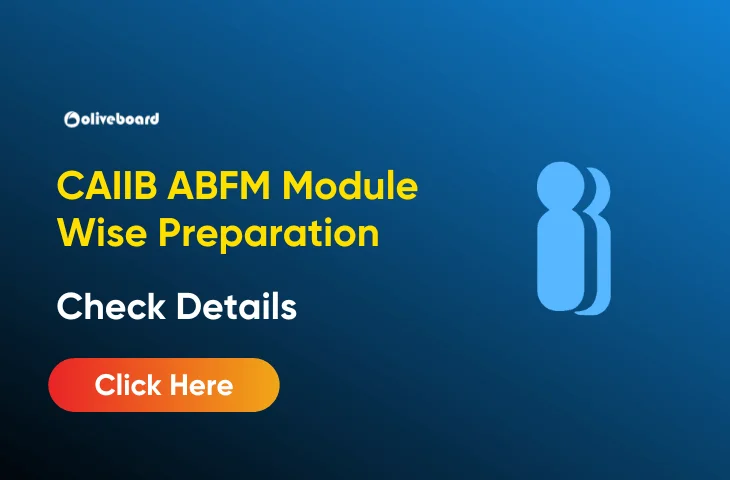
- CAIIB Risk Management Important Topics, Module-wise Weightage
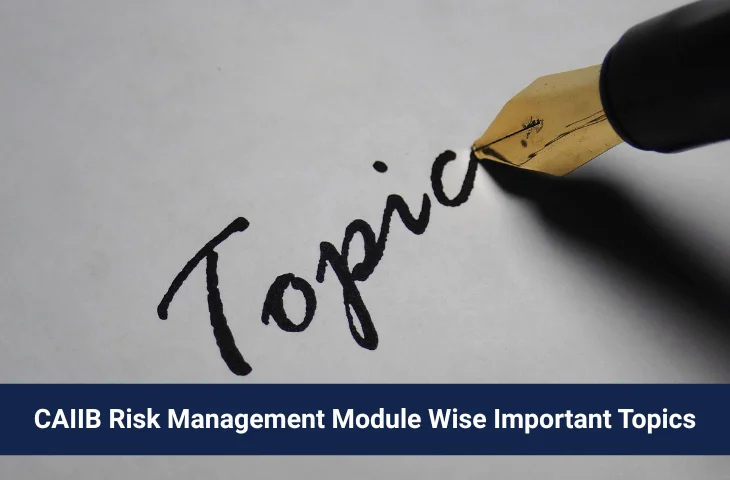
- CAIIB Rural Banking Module-wise Important Topics
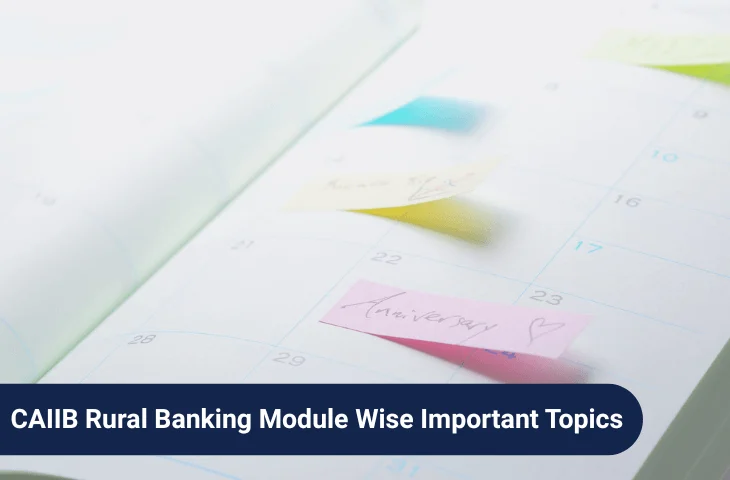
- CAIIB HRM Elective Paper Important Topics and Preparation Strategy

- CAIIB ABM Module Wise Important Topics and Weightage
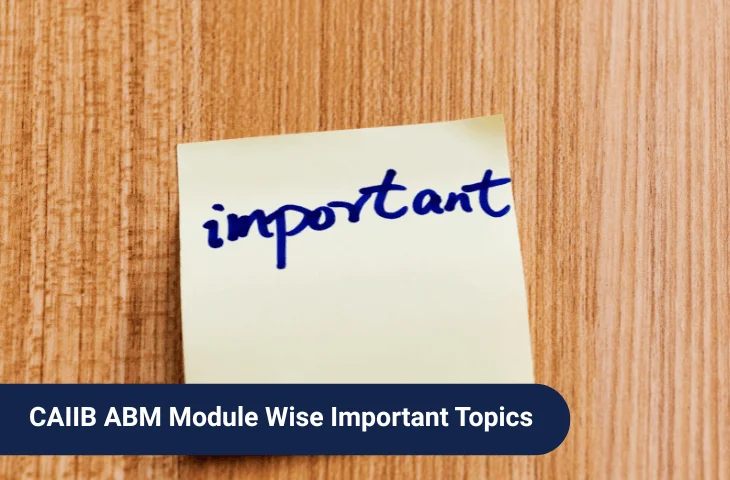

Hello there! I’m a dedicated Government Job aspirant turned passionate writer & content marketer. My blogs are a one-stop destination for accurate and comprehensive information on exams like Regulatory Bodies, Banking, SSC, State PSCs, and more. I’m on a mission to provide you with all the details you need, conveniently in one place. When I’m not writing and marketing, you’ll find me happily experimenting in the kitchen, cooking up delightful treats. Join me on this journey of knowledge and flavors!
